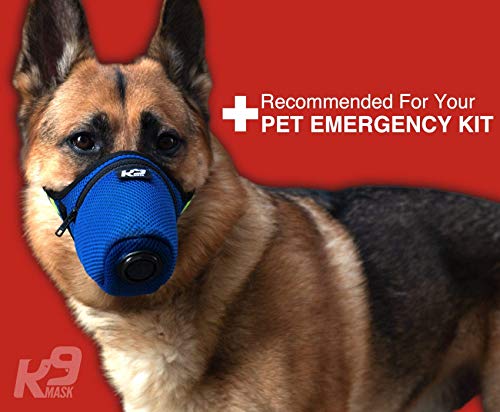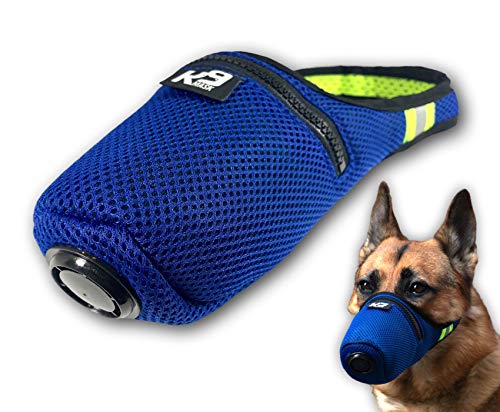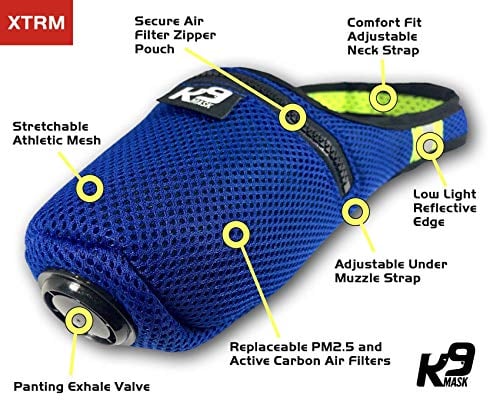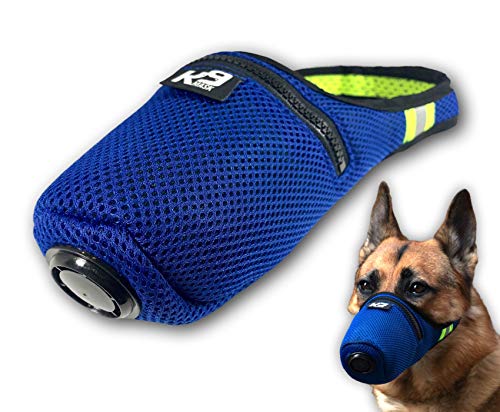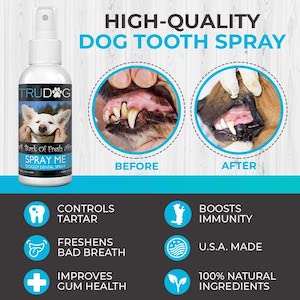- This post contains affiliate links. Read more here.
- Not a substitute for professional veterinary help.
With wildfire season causing air quality concerns on the West Coast, more pet parents than ever are worried about the effects of smoke inhalation on dogs. When the air quality is bad, it’s best for you and your pup to stay inside. But total seclusion isn’t always possible, leading many to wonder—on those short trips outdoors, should my dog be wearing a mask?
Enter the folks at Good Air Team, who say yes. That’s why they’ve developed the K9 Mask, which first debuted on SharkTank. Kirby Holmes and Evan Daughtery made a compelling pitch back in November of 2020, and now their masks are gaining popularity.
But should you buy one for your dog? We’ve done the homework and, with the help of Rover test pup Oscar, tracked down some answers.
Why Would You Want a Mask for Dogs?
Smoke and poor air quality are as much of a problem for dogs as they are for humans—and prolonged or extreme exposure causes respiratory distress that can lead to health problems, permanent damage, or even death.
For senior dogs, dogs with compromised immune systems, and brachycephalic breeds (that’s flat-nosed dogs like Pugs, Bulldogs, and Boston Terriers), it’s worse—smoke inhalation can strain already taxed respiratory systems, making even small amounts dangerous.
For humans, the solution is a mask: masks can keep smoke, ash, dust, pollen, and allergens out of our airways. But human masks don’t fit dog snouts, and DIY versions made for your pup at home aren’t a good idea—which is why the dog-specific K9 Mask has taken the internet by storm.
“It’s fantastic that pet parents are finally getting the idea that air quality issues affect the two-legged and four-legged alike,” says Rebecca Greenstein, Veterinary Medical Advisor for Rover and Chief Veterinarian at Kleinburg Veterinary Hospital. “Dog respiratory tracts are extremely vulnerable too.”
The gold standard for humans and pets alike is an N95 filter, and whether it works or not depends entirely on the fit. “If there are gaps and leaks, the filter isn’t working the way it’s designed. A good mask needs to form a seal against a dog’s mouth, and more importantly against your specific dog’s mouth,” Dr. Greenstein explains.
That’s the coverage that the new K9 Mask seeks to offer.
The K9 Mask looks and functions like a soft muzzle. It’s made from gentle athletic-flex mesh held in place by an adjustable under-neck strap, while a small exhale valve at the nose lets your dog pant to stay cool. The fabric itself is relatively porous—so what’s really protecting your pup is the replaceable N95 filter that inserts into the mask through a zippered opening on the snout.
Once inserted, the activated charcoal filter wraps all the way around the mouth, offering 360º coverage. Each one promises to “protect dogs in wildfire smoke, dust storms, volcanic ash, tear gas, chemical spills, red tide brevotoxins, pollinating vegetation, allergies, bacteria, mold, and fungus” for up to four hours.
A mask comes with a set of three filters, and more are available for individual purchase. They come in two options: heavy-duty “Extreme Breathe” filters for use at “Unhealthy” to “Hazardous” air quality levels (AQI 250–500), and “Clean Breathe” filters designed for “Moderate” to “Unhealthy” air quality levels (AQI 100-250).
What Do Dogs Think of the K9 Mask?
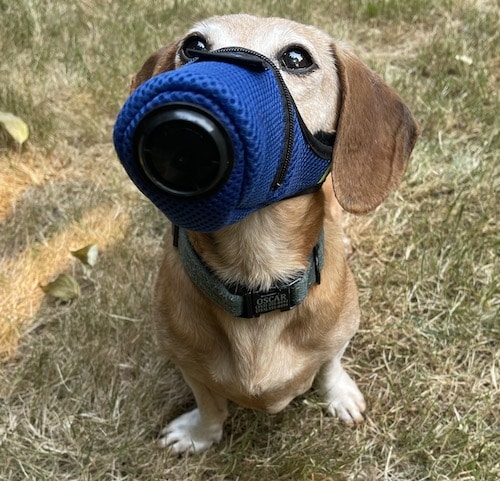
Oscar models the K9 mask for dogs.
To see how the K9 Mask works and fits, we enlisted intrepid Rover test pup Oscar. Oscar is a cheerful Miniature Dachshund with a mild disposition (unless you leave him alone for more than ten minutes—we’re working on that). His tolerance for costumes is moderate, but he had no experience with muzzles or face coverings.
Getting the air filter in the mask was simple, as was adjusting the straps on a doubtful Oscar. We worried the mask wouldn’t be a good fit for a Dachshund’s unusually long and narrow snout, but the size chart was right on target. Since Oscar was between sizes, we opted for the larger mask, per the manufacturer’s recommendations, and the results were good: Oscar’s mouth and nose were fully and comfortably covered.
Oscar, however, didn’t agree. Though we introduced the mask gradually with treats, as the Good Air Team recommends, it didn’t win the product any points. Once the mask was on, Oscar did an impressive job of putting it through its paces.
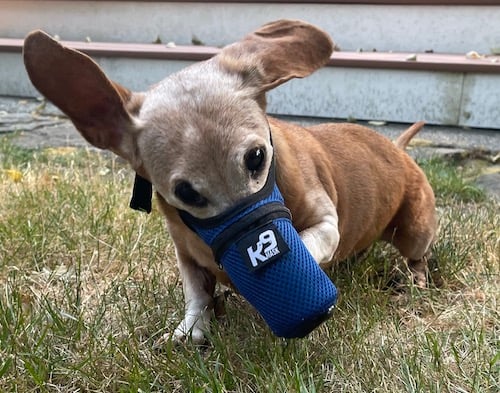
Tail wagging, he smooched along the ground nose-first, tossed his head, and tried to pry it off with his paws—all to no avail. At no point, however, did he have difficulty breathing or appear physically distressed, and when directed, he was content to walk on a leash.
He did eventually reach a degree of peace with the mask: after about ten minutes, he stopped trying to remove it and decided to simply wait for rescue.
When we took it off, we found his breathing and saliva production were both normal and unaffected, and we received enthusiastic tail wags.
Pros and Cons of a K9 Mask for Your Dog
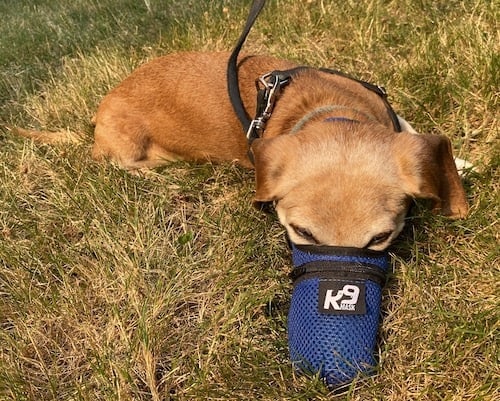
Oscar’s experience left us confident that dogs can comfortably wear the K9 Mask—but it’s unlikely that most will enjoy the experience. Safety, however, may trump your dog’s preferences in a sticky situation, and that’s ultimately what the mask is for: a time when air pollution makes trips outside dangerous.
Here’s what we like about it:
- A soft, reusable mesh exterior—just remove the filter and throw the mask in the wash for easy cleaning
- Replaceable human-grade N95 air filters for a variety of air quality levels
- Adjustable straps that ensure a snug fit (not even famed escape artist Oscar could get this off)
- Exhale valve to facilitate panting
- Reflective ribbing for low-light visibility
- Made in Austin, Texas
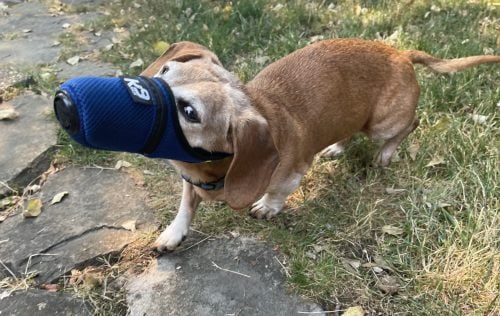
But there are some cons to consider as well:
- Though filters last up to four hours, the manufacturers recommend you remove the mask every 10 minutes for heavy filters and 30 minutes for lighter filters to monitor your dog’s panting
- Different dogs experience different degrees of anxiety about having something on their face—your pup may or may not be able to tolerate the K9 Mask comfortably
- Check with a vet if your pup belongs to a brachycephalic (flat-faced) breed or has a respiratory condition—it might not be wise to make their already-difficult job of breathing even harder
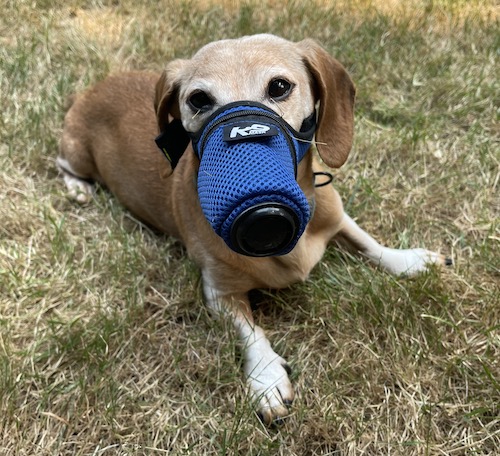
So should you buy?
It depends on what you’re looking for. If you’re hoping to resume long walks with your pup during fire season, this probably isn’t the solution. With required checks at 10-minute intervals during usage and a four-hour lifespan per filter, it’s not a convenient tool for long-distance strolls. (Plus, there’s your own lungs to consider!)
But if your air quality is often jeopardized by wildfire smoke, and especially if you think you might one day need to evacuate, the K9 Mask offers some peace of mind. And if it makes you feel better about a quick trip to your pup’s favorite pee spot or a hasty walk to the car, we’re in favor!
We’re sending good thoughts to all those affected by wildfires, and we hope you, your family, and your pets stay safe, happy, and healthy out there.


